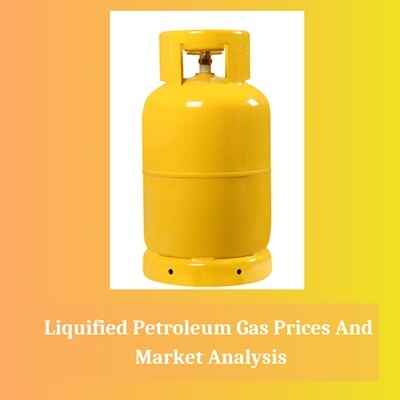
LPG Pricing Trends in 2025: Insight
Liquefied Petroleum Gas (LPG) is a vital energy source used globally for cooking, heating, and various industrial purposes. As we move closer to 2025, understanding the key factors influencing LPG pricing will be essential for both consumers and businesses. This article will delve into the expected trends and developments in LPG pricing for 2025, exploring the factors that will shape the cost of this energy source.
The Role of LPG in Global Energy Use
LPG is a clean-burning, efficient fuel that is derived from both natural gas and crude oil. It is used in households for cooking, heating, and as a fuel for vehicles in some countries. It’s also important in industries such as agriculture, manufacturing, and transportation. The ability to store LPG in liquid form and its relatively lower environmental impact compared to other fossil fuels makes it an attractive energy choice, especially in areas without direct access to natural gas pipelines.
In 2025, the demand for LPG is expected to continue growing, particularly in emerging economies. As the world becomes more urbanized and industrialized, LPG will play a key role in meeting the energy needs of millions of people. However, several global and regional factors will affect LPG pricing, creating a dynamic and sometimes unpredictable market.
Book a demo for a real-time, data-driven insights:- https://www.price-watch.ai/book-a-demo/
Factors Affecting LPG Prices in 2025
1. Global Demand and Consumption Growth
The demand for LPG is expected to grow significantly by 2025. Rapid urbanization, population growth, and economic development in emerging markets, particularly in Asia, Africa, and Latin America, will increase the need for clean and efficient energy sources. In many developing countries, LPG is the preferred fuel for households, especially in areas where access to electricity or natural gas is limited.
This rise in demand, especially from countries such as India, China, and others in Southeast Asia, will likely exert upward pressure on LPG prices. With more people turning to LPG for daily activities such as cooking, heating, and industrial applications, the overall global consumption will increase, driving prices higher.
2. Crude Oil Prices and Their Impact on LPG Costs
LPG is a byproduct of crude oil refining and natural gas processing. Therefore, LPG prices are closely linked to the price of crude oil. As crude oil prices fluctuate, so do the costs associated with producing and transporting LPG.
In 2025, oil prices are expected to remain volatile due to factors such as global supply-demand imbalances, OPEC’s decisions on oil production cuts, and geopolitical instability in oil-producing regions. For example, tensions in the Middle East, disruptions in oil supply chains, or changes in production levels from major oil producers like the U.S. and Saudi Arabia could significantly impact LPG prices.
If oil prices rise, consumers can expect higher LPG costs, as the cost of refining and transporting LPG will increase. On the other hand, if oil prices fall, it could provide some relief and potentially reduce LPG prices, at least temporarily.
3. Geopolitical Risks and Supply Chain Disruptions
The global LPG market is highly interconnected, and geopolitical risks are a constant concern. Many of the world’s largest LPG producers are located in politically unstable regions, such as the Middle East, Russia, and Africa. Any conflict, trade disputes, or sanctions in these areas could lead to disruptions in LPG supply, which could result in price increases.
Furthermore, global shipping and transportation disruptions—such as those caused by natural disasters, strikes, or logistical bottlenecks—can also lead to delays in LPG deliveries, affecting prices. In 2025, any significant disruptions in key exporting countries or transportation hubs could lead to short-term price spikes in certain regions.
4. Technological Developments in LPG Production
Innovations in LPG production and storage technologies may play a crucial role in controlling costs. Advances in liquefaction processes could lead to more efficient production methods, reducing the overall cost of LPG. Additionally, improved storage and distribution methods—such as more efficient tankers and better storage systems—could help reduce transportation costs and ultimately lower consumer prices.
For example, innovations in liquefied natural gas (LNG) and LPG transport may allow for faster, cheaper, and more secure delivery of the fuel to global markets. This could lead to more competitive pricing in the long run, as the cost of delivering LPG decreases.
5. Environmental Policies and Sustainability Initiatives
Governments across the globe are becoming more focused on reducing greenhouse gas emissions and addressing climate change. While LPG is a cleaner alternative to traditional fuels like coal and wood, it still contributes to carbon emissions. In 2025, environmental regulations and sustainability initiatives may impact the pricing of LPG.
Countries with stricter environmental policies may impose higher taxes on fossil fuels, including LPG, in an effort to incentivize cleaner energy sources. However, governments may also introduce subsidies or incentives to promote the use of LPG, particularly in regions where access to electricity or natural gas is limited. These policies could play a significant role in stabilizing or even lowering LPG prices, depending on the region.
6. Regional Pricing and Market Dynamics
LPG prices are not uniform across the globe. Regional market dynamics play a large role in determining local prices. In areas with abundant natural gas and oil resources, such as the United States or Russia, LPG prices may remain stable or even decrease, as the supply is more readily available.
However, in regions that rely heavily on imports, such as many countries in Europe and Southeast Asia, prices may be more volatile. These regions are more vulnerable to fluctuations in global supply and transportation costs. In addition, local factors such as infrastructure limitations, taxes, and government policies can also contribute to regional price variations.
What Can We Expect from LPG Prices in 2025?
The LPG market in 2025 will be influenced by a combination of supply and demand factors, oil price fluctuations, geopolitical events, technological advancements, and environmental policies. Although predicting exact prices is difficult, the following trends are likely:
-
Increasing Demand: The continued growth of urbanization and industrialization in developing countries will drive higher global LPG demand, which could lead to rising prices.
-
Oil Price Volatility: Since LPG prices are closely tied to crude oil, fluctuations in oil prices will continue to affect LPG prices, creating potential price swings.
-
Geopolitical Risks: Any political or economic instability in key LPG-producing regions could lead to supply disruptions and price increases.
-
Environmental Policies: Stricter environmental regulations may raise production costs, leading to higher LPG prices. However, subsidies or incentives could help offset price increases.
-
Technological Innovation: Advances in LPG production and distribution technologies could help reduce costs and stabilize prices in the long run.
As we approach 2025, it’s clear that the pricing of LPG will be influenced by a multitude of global and regional factors. Consumers and businesses that rely on LPG should stay informed about the key trends affecting prices, such as rising demand in developing countries, crude oil price fluctuations, geopolitical risks, and technological advancements.
By staying ahead of these trends, consumers can better manage their energy costs and make informed decisions about their LPG usage. For businesses, particularly those in energy-intensive industries, understanding these dynamics will be crucial in planning for the future and mitigating the impact of price volatility.
Stay informed with Price-Watch. For more insights, in-depth analysis, and the latest updates on global commodities, visit our website. Explore how our data-driven intelligence can help you make smarter decisions and stay ahead of the market.









